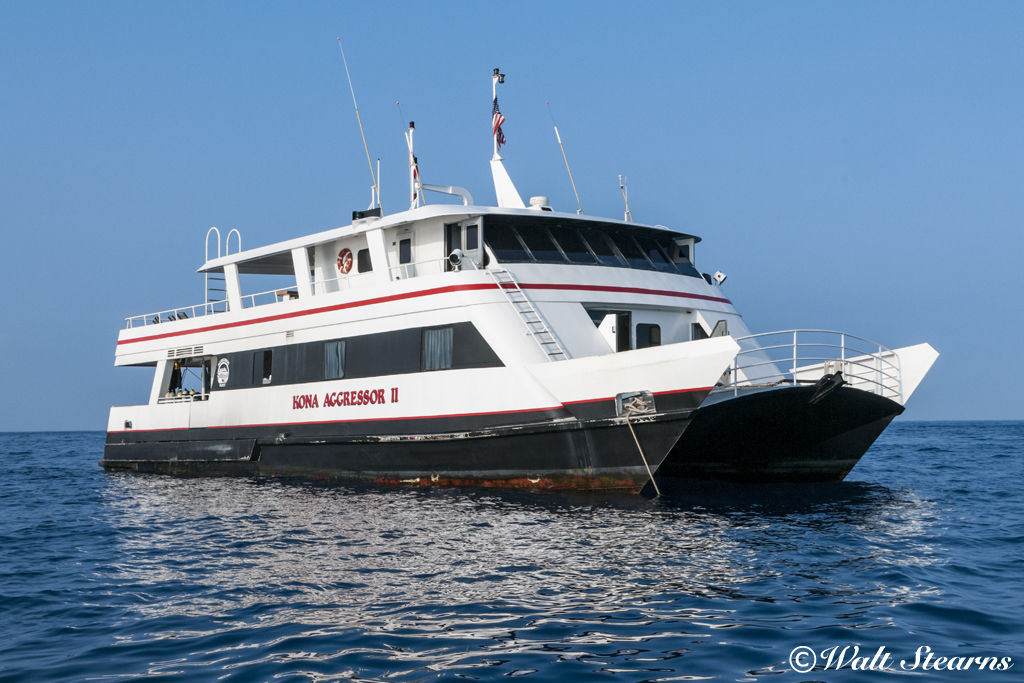
Online Reviews
Text and Photography by Walt Stearns
It’s not often one is faced with such choices, especially when you are just a football field offshore of a major tourism destination, and literally within sight of Hawaii’s Keahole Airport. Instead of the sound of surf breaking on the rocks on some far island in the Galapagos, we could hear the rumble of a passenger jet taxiing down the runway.

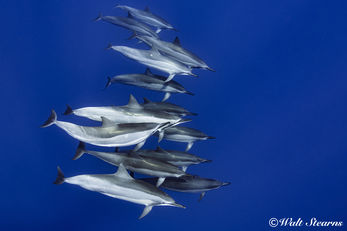
Choosing between mantas and dolphin was the pleasant dilemma my wife Karen and I faced during our week aboard the Kona Aggressor II. When the boat first pulled into Garden Eel Cove, we were greeted by a large pod of spinner dolphins. As in many of the large bays and coves dotting the Kona Coast, the calm waters provide spinner dolphins with a protected place to rest and play before returning to the open sea at night to hunt pelagic squid. And for the mothers in the pod, it's a chance to nurse their calves,
This same cove is also the site for one of Kona’s renowned manta night dive encounters. Not long after we got in the water, we encountered some of the big rays cruising back and forth, feeding along the edge of the reef, and occasionally breaking off to get a closer view of us less-than-graceful snorkelers.
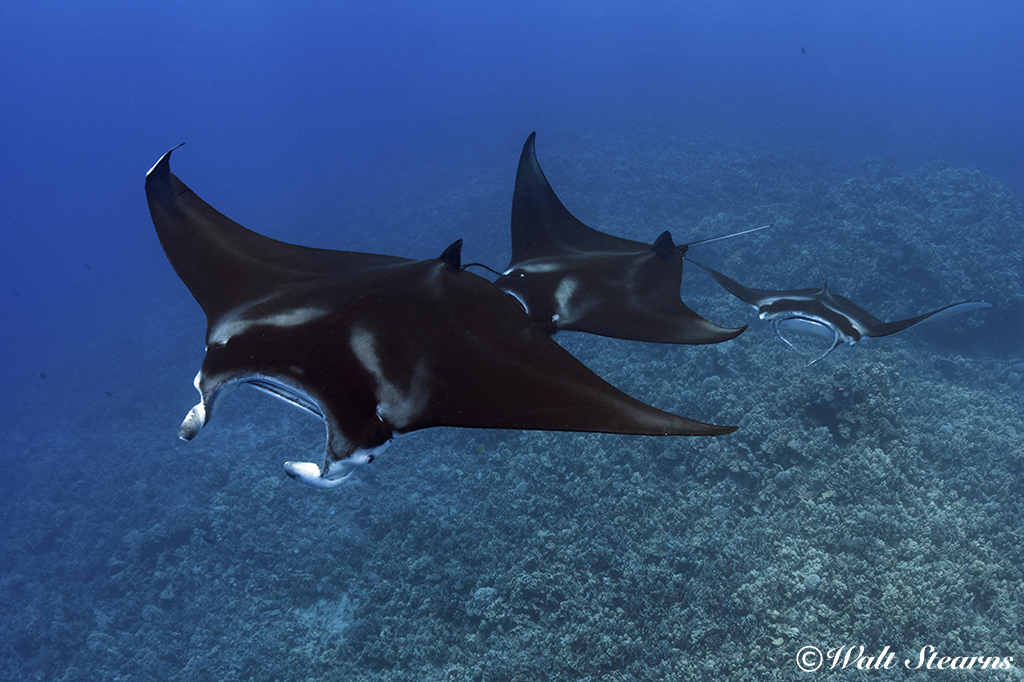
I consider myself very fortunate to have enjoyed the opportunity to dive several of the Pacific and Indo-Pacific ’s best venues: Coco’s, Galapagos, Socorro, Fiji, Vanuatu, PNG, Komodo, Truk, and more. But though I’d made many a connection through Oahu, until recently I’d never devoted much time to discovering Hawaii’s underwater landscape. I had often heard fellow divers describe the diving as “O.K., but not in the same class as lots of other places in the Pacific.”
Now, I was learning otherwise. Granted, the waters of Hawaii don’t have the same high energy level of big animal encounters as the Eastern Pacific, or the extensive soft corals and the massive diversity of invertebrates and fish you would see further west in the Tropical Pacific. But there’s more to great diving than seeing how many species of fish and invertebrates can be checked off in shopping list fashion during each dive.
Turns out, there are plenty of reasons to consider Hawaii for a diving adventure, and many of the state’s best underwater attractions can be discovered while diving the Big Island aboard the Kona Aggressor II. This boat is Hawaii's pre-eminent live-aboard. For more than 20 years, the Aggressor Fleet has kept a boat in operation on the Big Island’s west coast, and theirs is the only liveaboard operation in the region to have lasted more than two years. So they must be doing something right.
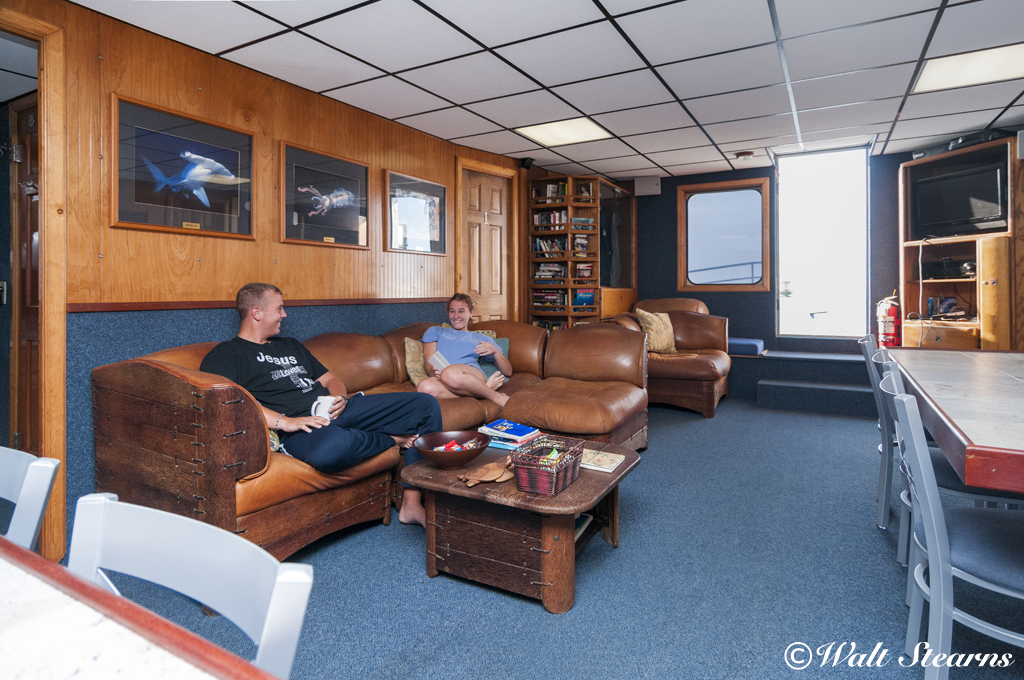
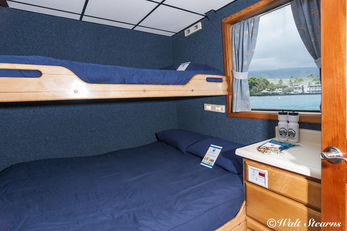
Built in 1995, the Kona Aggressor II differs from her predecessor, the Kona Aggressor I, in that she does not follow the converted crew boat design. Instead, she is an 80-foot catamaran, custom-built for the dive trade like her big sister, the Palau Aggressor II. The catamaran design places all five of the deluxe, double occupancy guest staterooms on the main deck along with both salon and dining area, so there’s no “going below.” At first, I thought this arrangement with the cabins on both side of the salon would affect privacy, but after a first night, it became clear that it didn’t.
Being up top has its perks - like a nice-size 3 by 3-foot window instead of a porthole for taking in the scenery. Other than that, the accommodations are what you expect to find on an Aggressor boat: a bunking arrangement that places one queen size mattress below, plus a single upper berth; vanity with sink and hair dryer; individual AC climate control; TV/DVD; private bathroom with shower; and modest storage space for clothing and belongings. Remember, this is life on a boat, so you don’t need to pack a lot of clothing.
The boat’s one quad cabin, which has more room than the deluxe cabins, features two full-sized berths, along with two single berths, plus all the amenities of the deluxe cabins. If it’s just you and your spouse, or a friend, then the quad might be the best deal on the boat as the rate is cheaper than the deluxe cabins.
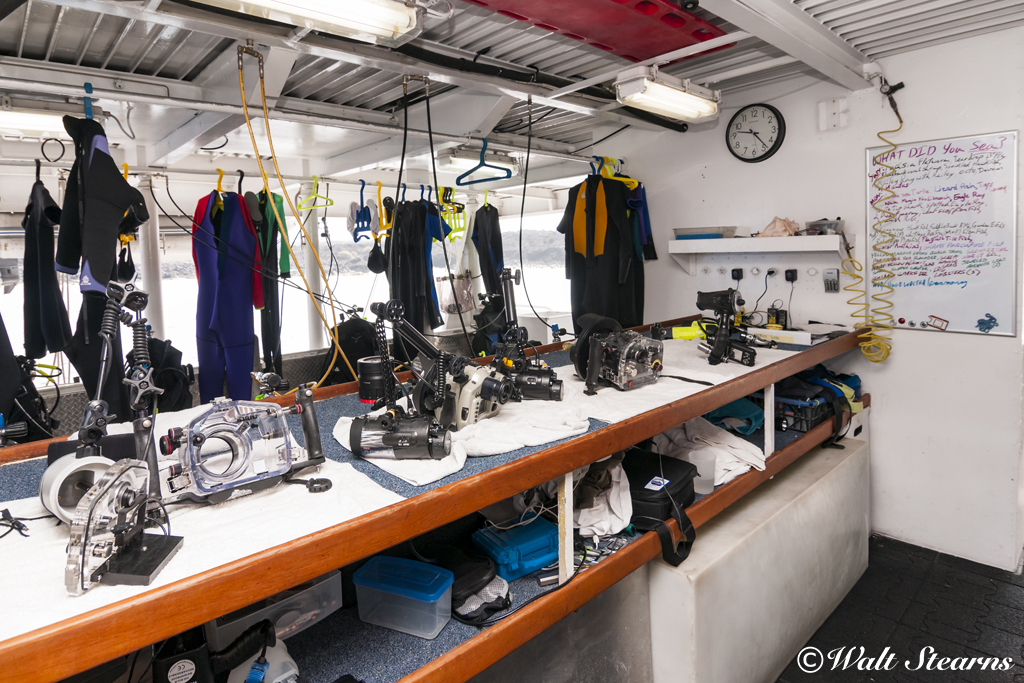
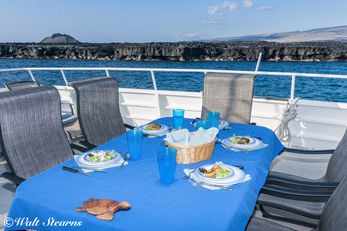
The Kona Aggressor II was the first liveaboard to receive a Five Star rating by the Handicapped Scuba Association (HAS) as a barrier-free live-aboard, complete with HSA certified staff instructors, electric incline lift and shower stalls with seats. Some of the cabins have extra-wide doors to accommodate wheelchairs.
The center salon and dining area are certainly spacious enough to kick back in between dives, read a book, or watch a movie. Because the boat operates close to the Kona coast, cell phones will work from the boat, and at normal US domestic rates. I consider this to be both a blessing and a curse.
Of the various liveaboards I’ve enjoyed over the years – including several Aggressor boats – one of the features of the Kona Aggressor II that most stands out is the food. The meals prepared by the onboard chef were spectacular. We are talking first-rate from morning to evening. The day starts with items such blueberry pancakes, fresh fruit and eggs done your specifications, chased with coffee from Kona’s own hillside plantations,, The day ends with a mouthwatering list of dinner entrées like Ahi tuna with a wasabi bur blanc, cilantro-garlic roasted chicken breast with sautéed garlic broccoli and jasmine rice, or roasted pork loin with a maple pan au jus. Most meals are set up buffet style, with dining inside the salon at two long tables, while some of the lunches and snacks (there is always something to eat) are served up top on the sun deck.
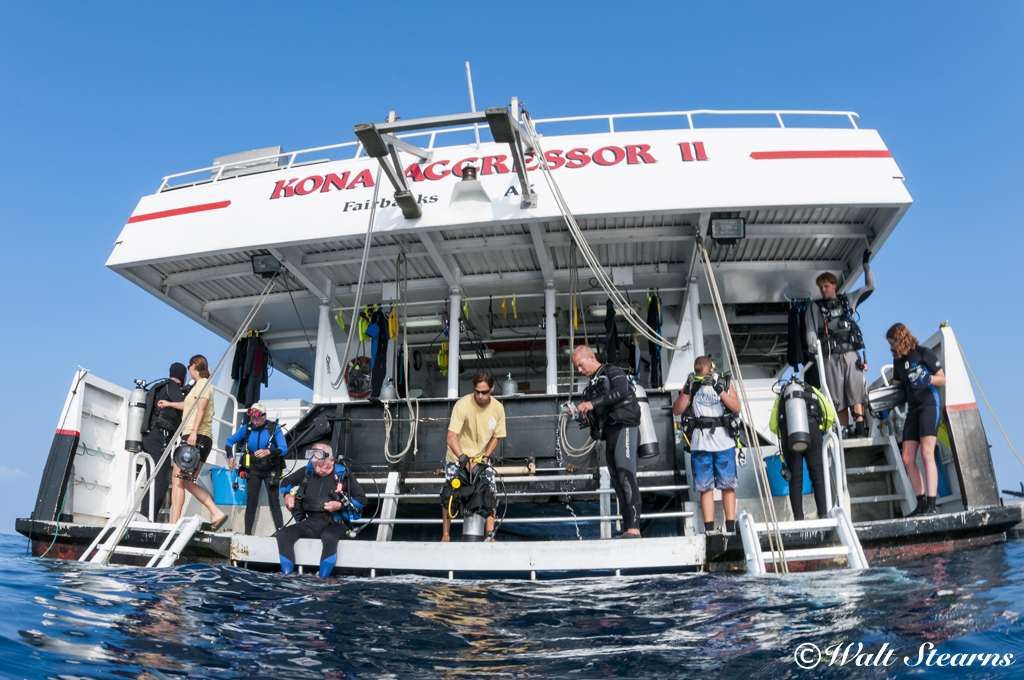
The dive deck is always a marvel of efficiency and convenience on Aggressor boats. The company created and refined the dive deck layout that has become the benchmark others aspire to. Each dive station includes cavernous under-bench storage; the camera table is well-protected from the wind and dripping wetsuits, and there is ample storage space below. A dunk tank by each ladder is reserved for photo gear, and there are freshwater showers on the swim step with warm towels waiting by the ladder at the end of each dive.
Each diver is issued one 80 cf aluminum tank, which is all that is needed, as the boat is fitted with two E-150 Bauer air compressors and a Kaeser SM-11 Nitrox rotary screw compressor, all with cascade storage. This setup makes it fast and easy to top off tanks between dives. Nitrox is optional for $100 for the week. In my mind, it’s money well spent, because having invested a good deal of money in getting aboard, you’ll want to get the safest bottom time as possible.
The Kona Aggressor II’s six-person crew takes an enthusiastic, hands-on approach to guest service. From managing dive operations to keeping the staterooms immaculate, everyone pitches in. During our visit, the boat ran as smoothly as the proverbial well-oiled machine. In addition to an enthusiasm for their jobs, the crew takes a lot of pride in the underwater environment and shares their pride and enthusiasm with guests.
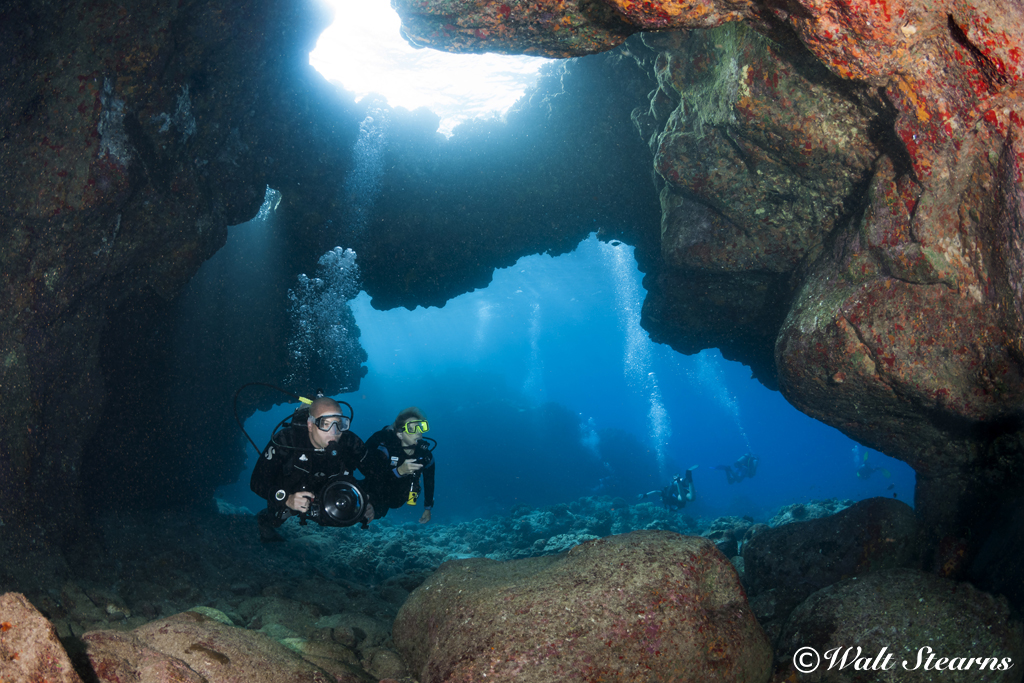
A Total Underwater Experience
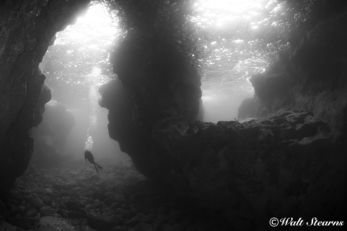
In geological terms, the rugged, craggy shoreline of Hawaii’s Big Island is newly spawned and constantly expanding due to Kilauea’s volcanic activity. The volcanic origins of the underwater topography create a diver's wonderland of lava tubes, arches and pinnacles, which have been covered in gardens of hard coral and colonized by a broad range of marine life native to the south Pacific, as well as a few endemic to only the waters of Hawaii.
As I said before, no destination should not be judged solely on a shopping list of invertebrates and fish discovered, but instead on the total underwater experience. Diving the Kona Coast provides some elements of what one might find in the South Pacific, along with others more reminiscent of eastern Pacific destinations such as Cocos Island.
The Kona Aggressor II operates primarily along a 50-mile plus stretch of the Big Island’s western Kailua-Kona Coast. Sheltered from prevailing winds and swell, this area contains some 80 dive sites. The typically clear waters are in the mid to high 70-degree range, and the underwater terrain slopes gently from the shore into fields of lava rubble and boulder fields covered with hard corals before rolling off more steeply around 80 to 100 feet.
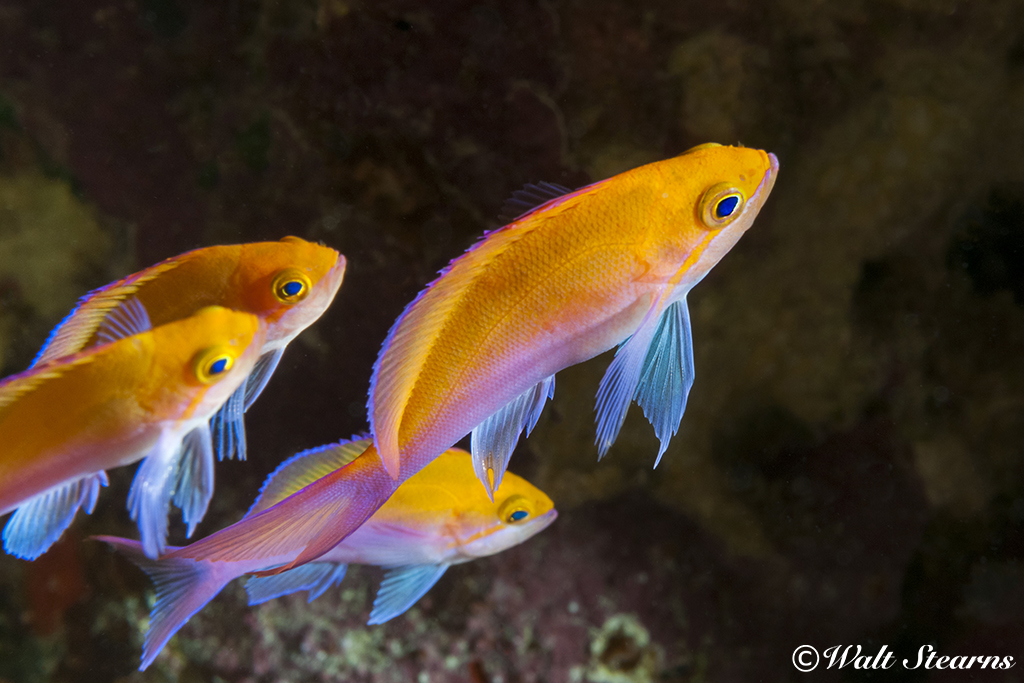
At most of the sites visited, the hard corals present are surprisingly pristine (a word I don’t use lightly) with heads showing uniform coral polyp coverage and coloration. The distinguishing features of most sites are the size and number of pinnacles and lava tubes present.
The site is known as Stoney Mesas, for example, features four large flattop pinnacles in the 65-foot depths, which gives the bottom a strong resemblance to a Sedona, Arizona, landscape. Except these underwater mesas are covered in titan scorpion fish, turtles, gobies and wire coral. The tallest pinnacle, which has been named the Hive, towers 50 feet off the bottom and takes its name from the many small tropicals that swarm about it like bees.
Among the extensive list of Kona dive sites, Au’au Crater often gets top billing. The underwater topography of at the site is quite dramatic, as the profile of the submerged crater is more like a v-shaped canyon, with vertical relief ranging 30 to 70 feet on one side, and 50 to 200 feet on the other as it funnels up and inward towards shore. The guidebooks also describe it as a “good spot for pelagics such as oceanic whitetip sharks, hammerhead sharks, and large jacks.” Although I watched the drop-off for something large, a sleeping sea turtle was as good as it got. But even without the big critters, Au’au was still immensely enjoyable with plenty of small Technicolor denizens to eat up a gig or two of my camera’s flash card.
Turtle Pinnacles, which is located at the north end of Kona is a site highly publicized for green turtles that gather atop a pinnacle to be cleaned by mobs of yellow tangs. But during our visit, the turtles were nowhere to be seen. And because the site lies right outside the entrance to the largest, and most active marina on the coast, the visibility can be less than on most Kona sites, dropping to a mere 50 – 75 feet. Wow, I was really getting jaded, as 50 to 75-foot visibility at many familiar sites back home on Florida’s East Coast is more the norm. The site still provided plenty of macro subjects, from football-sized peacock grouper to flame angels, butterfly fish, nudibranchs and flatworms.


The Kona Aggressor II operates year-round and the diving is equally good across the seasons, though there is a greater likelihood of seeing humpback and pilot whales in the winter. That said, we had several pods of pilot whales show up during our week in July, and were fortunate to do a snorkel with one pod.
Over the course of a week, which includes 5.5 days of diving, one could easily log up to 28 dives. On the first five days of the trip, night dives are offered after dinner. To forgo any of these—especially the night manta dive—would be a mistake.
Dive times, as long as it doesn’t involve decompression, are up to you. Most of mine ranged from 55 to 65 minutes. Logging of depths and times on returning are required but don’t expect the crew to check your computers. An 110-foot max depth is enforced, but there's really not much to see beyond that depth as most coral growth runs out at 90 feet. Divers have lots of choices, and environmental conditions are suitable for just about any experience level.
Considering all that this area has to offer, I was not surprised to learn that many divers return to Kona repeatedly. I hope to do the same someday soon.

Stay to Savor the Coffee and Macadamia Nuts
Before or after a trip on the Kona Aggressor II, I highly recommend reserving a few days to rent a car and explore the Big Island. There is a whole lot more to this island to see and experience than some cheesy luau at a big resort.
The island of Hawaii has multiple personalities. Here you’ll find both tropical beaches and snow-topped mountains. The island’s highest summit is Mauna Kea at 13,796 feet, the tallest in the Hawaiian chain. One side of the island is a verdant rainforest that gets 200 inches of rainfall a year, creating spectacular waterfalls, while parts of the western Kailua-Kona (leeward) coast is almost as dry as a desert. At the southern end of the island is Kilauea, one the world’s most active volcanoes.
The one significant settlement on the Kona Coast is not by any stretch of the imagination a large city. The downtown waterfront district of Kailua-Kona sees tourist activity on the days when a cruise ship docks, but it otherwise has a small-town feel. The shore is not lined with high-rise hotels like Oahu, and many of the nearby beaches are still only sparsely populated.
The true Hawaiian’s legacy is still represented through ancient Polynesian Petroglyph fields at Puako or Pu’uhonua o Honaunau, the royal Place of Refuge, which also features a fantastic shore dive with a chance for snorkeling or diving with sea turtles and spinner dolphins.
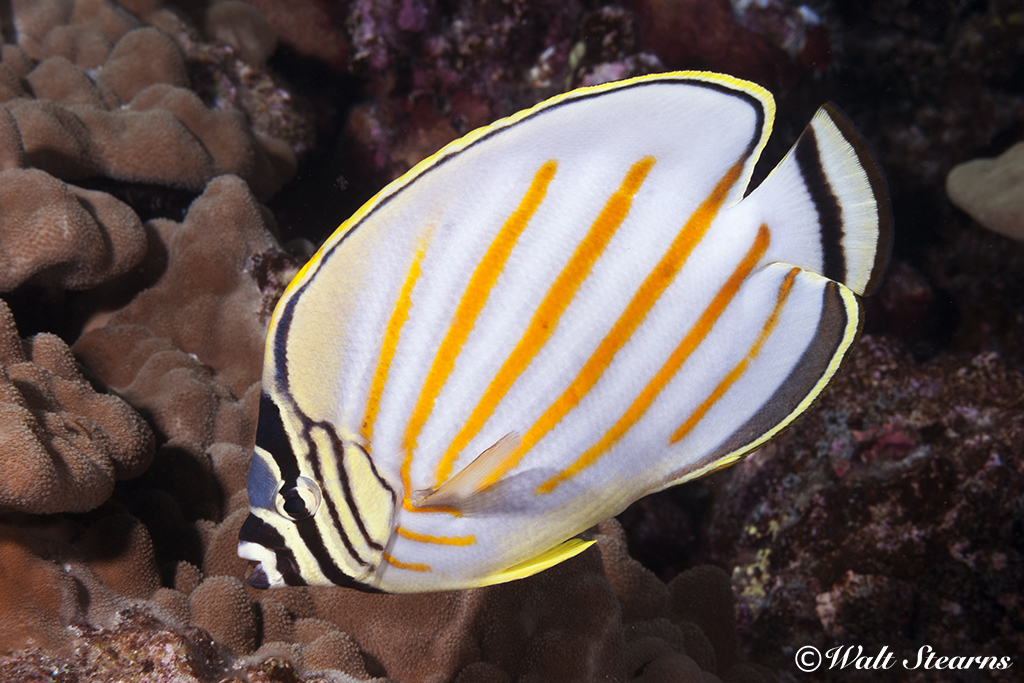
Book your next vacation stay at Kona Aggressor II online or send us an email at sales@caradonna.com.